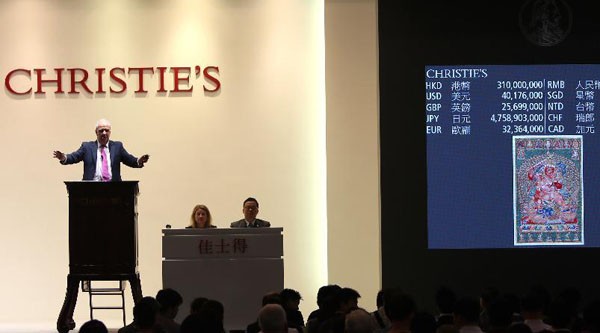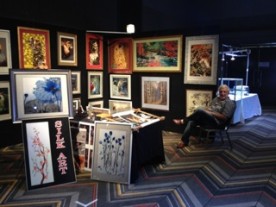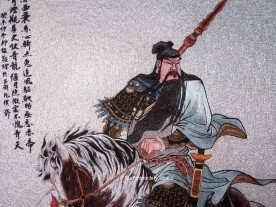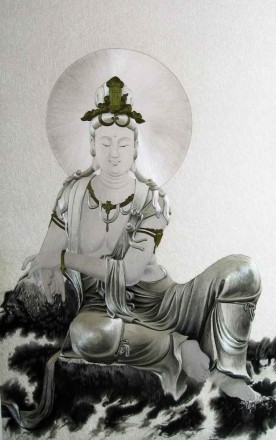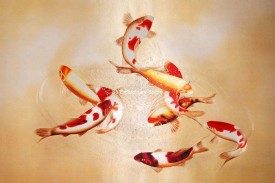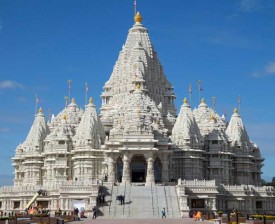On November 26, 2014, Christie's Hong Kong made headlines by announcing the sale of a monumental piece of art—a Ming Dynasty Yongle Imperial Red Yama Embroidered Thangka. With an estimated value of HK$80 million, this extraordinary work of art fetched an astounding HK$348 million at auction, setting a world record for the highest price ever paid for a Chinese work of art in the auction world.
The setting for this historic event was Christie's Hong Kong 2014 Autumn Auction, featuring a special session dedicated to the "Yongle Imperial Red Yama Embroidered Thangka." Held at the Hong Kong Convention and Exhibition Center, the auction room buzzed with anticipation as the bidding kicked off at HK$50 million. What followed was an exhilarating 22-minute auction battle, characterized by fierce competition from buyers both inside and outside the venue.
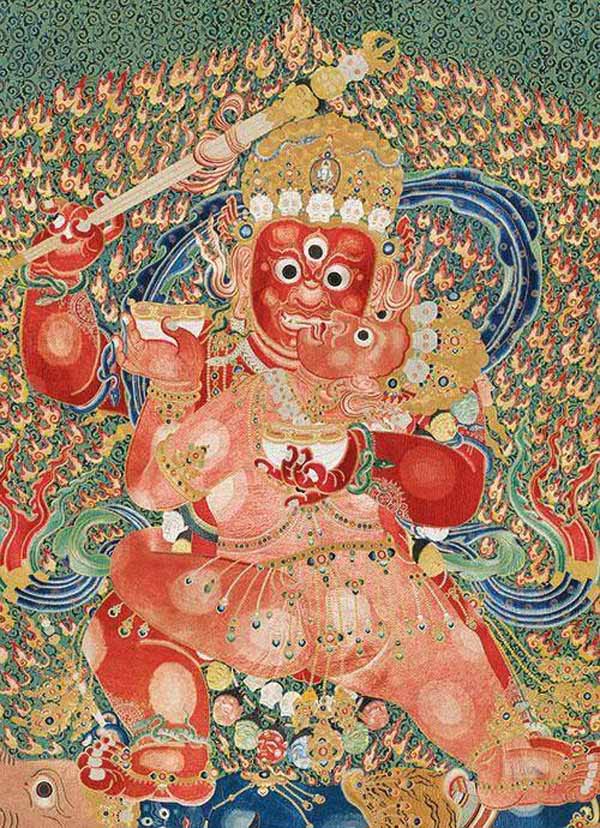
Yongle Imperial Red Yama Embroidered Thangka
The auction lot quickly became the focal point of the Christie's Hong Kong fall auction, attracting enthusiastic bids from those in attendance as well as telephone and numbered bidders. The bidding process was nothing short of intense, with offers steadily climbing and resounding applause filling the room. As the bids soared past HK$160 million, the competition intensified, culminating in increments of 5 million Hong Kong dollars.
Buy Chinese Silk Embroidery Online
The final showdown unfolded between Ms. Cai Jinqing, President of Christie's China, representing a telephone bidder, and Mr. Gao Yilong, Chairman of Christie's Asia-Pacific. After several rounds of spirited bidding—lasting an impressive 22 minutes, a notable departure from the typical one-minute-per-lot pace—the coveted "Yongle Imperial Red Yama Embroidered Thangka" found its new owner in Ms. Cai's hands.
This remarkable embroidery artwork, the "Yongle Imperial Red Yama Embroidered Thangka," boasts a storied history spanning over six centuries. It is one of the rarest giant thangkas globally, showcasing rich religious colors meticulously embroidered with gold and vibrant silk threads. At its center, the Red Yama commands attention with his wrathful countenance, cradling Princess Ming Vairocana Vajra in his arms. Every detail of this thangka is a testament to the unwavering dedication of its creators.
Thangkas, predominantly created using silk, brocade, and painting techniques, hold a unique and revered position in Tibetan culture. Regrettably, the specific artist or artists responsible for crafting this official thangka remains shrouded in mystery. Nonetheless, experts and connoisseurs alike consider themselves fortunate to have the opportunity to behold such a masterpiece in their lifetime.
Custom Portrait Embroidery from Photo
Remarkably, only three known examples of the "Yongle paragraph" embroidered thangka exist, with the other two preserved within Tibet's Lhasa Da Zhao Temple. This rarity adds tremendous value to the thangka, estimated at 80 million Hong Kong dollars.
The journey of this thangka through Christie's has been a remarkable one. It first left China's shores in the 1840s and found its way to the West. In 1977, it made its debut at Christie's in London, fetching £7,000 from an Indian collector. In 1994, the thangka changed hands again, this time in Christie's New York, selling for $1 million. In 2002, it appeared at Christie's Hong Kong once more, setting a record of HK$30.87 million, which remained unbroken until this momentous sale in 2014.
Several factors contribute to the significance and value of this extraordinary thangka. Firstly, its status as the world's largest thangka, coupled with its exceptional artistry and craftsmanship, makes it a masterpiece of unparalleled complexity and skill. The intricate silk weaving, dyeing, and embroidery processes involve a myriad of colors, including multiple shades of red.
Secondly, the thangka's origin from the imperial palace adds an element of rarity and historical value. It serves as a symbol of the amicable relations and unity between the central government and ethnic minorities during its era.
Lastly, this thangka represents a significant milestone in the history of Buddhist art. Its existence and enduring appeal highlight the profound influence of religious and artistic expression in Chinese culture and history.
by Su Embroidery Studio (SES), Suzhou China
SES is dedicated to Chinese Silk Embroidery Art and High-End Custom Embroidery
Find SES's embroidery work at Chinese Silk Embroidery for Sale.


